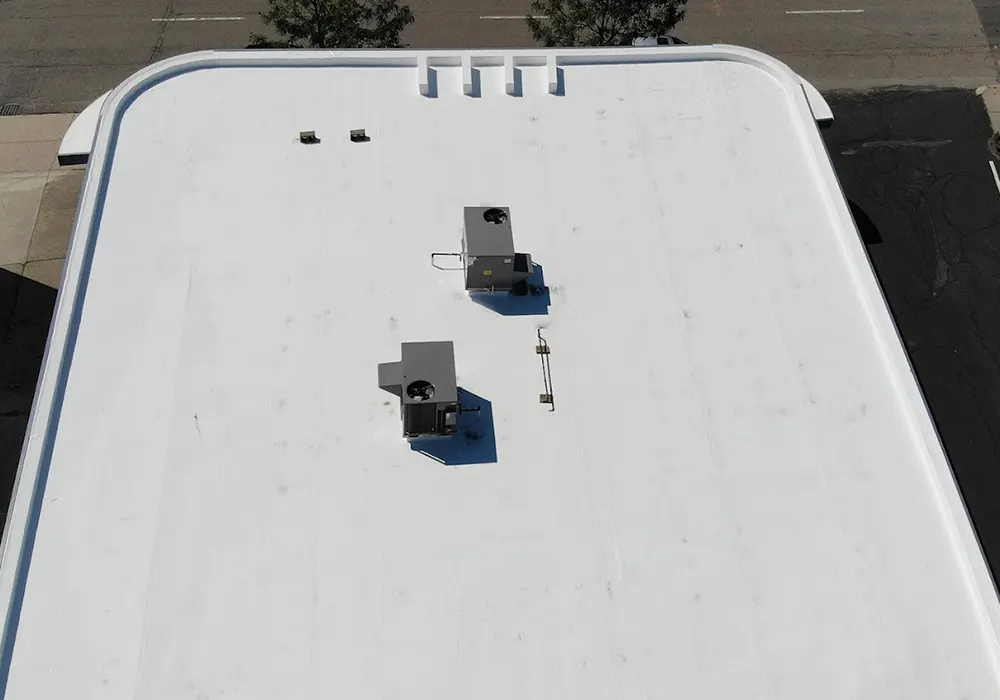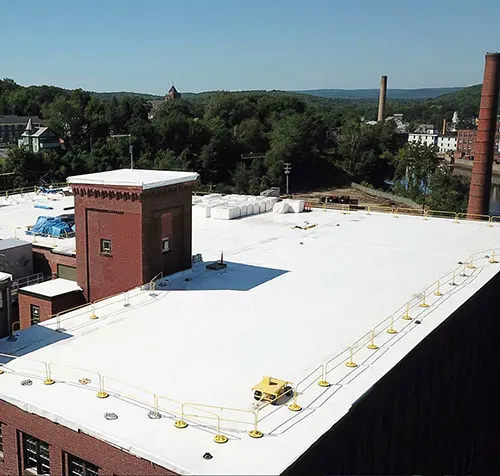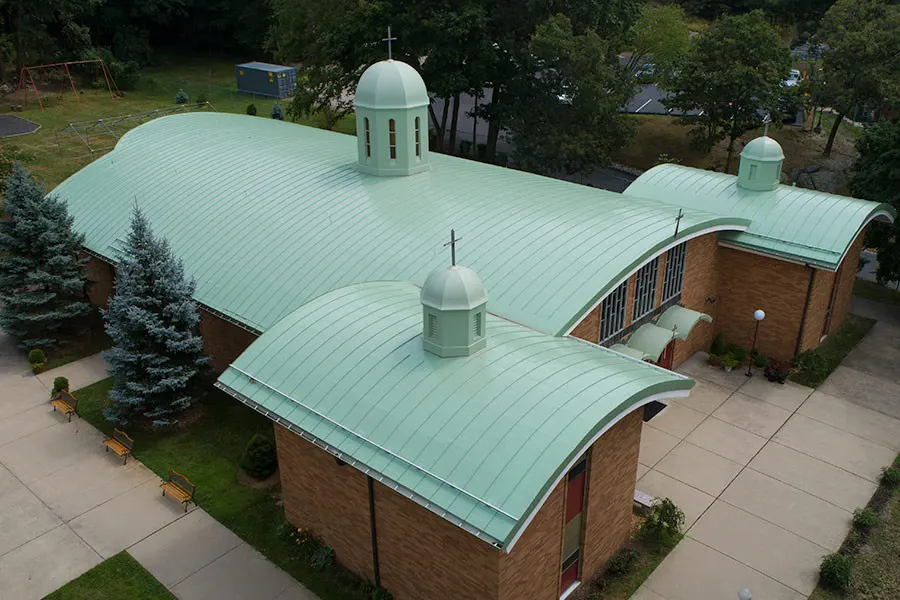PVC
What is PVC Roofing?
Thermoplastic polyvinyl chloride (PVC), or vinyl, roofing membranes are fabricated with a base resin, plasticizers and UV stabilizers, and fiberglass mats for reinforcement. This type of roof has been popular for nearly 50 years and continues to be a great solution for commercial low-slope and flat roofs where energy efficiency and sustainability are desired.

Highly Versatile & Effective
PVC roofing has an extremely long service life and can be recycled at the end of it by being heated and re-formed over and over to create new roofing membranes. Combined with the comparatively lower manufacturing and shipping impacts, this makes PVC one of the most sustainable roofing materials on the market today.
The excellent fire ratings of PVC roofing membranes, resistance to UV light degradation and strength in the face of every weather extreme make this material a superstar in the commercial roofing industry.
Since PVC roofing membranes are manufactured with a specific focus on strength and durability, they far exceed the minimum ASTM requirements set forth for strength. The ASTM requires roofing membranes to have a minimum of 200 lbs per square inch of breaking strength, though PVC membranes typically exceeding 350 lbs per square inch minimum breaking strength.
Performance & Sustainability
configurationsPVC Roofing Installation Options

Fully-adhered
Mechanically-attached

Why choose PVC?
PVC has many advantages over other types of roofing membranes that make it the ideal choice for many building owners.
Durable
Waterproof
PVC membranes have been a widely successful roofing feature for decades for the ability inherent in the material to resist water penetration even in extreme conditions, including standing water, perpetually moist conditions, temperature fluctuations and exposure to airborne fungus spores and bacteria.
Hot air-welded seams
The use of heat at the seams creates a permanent, watertight seal that is remarkably strong and does not require the use of additional adhesives.
Wind-resistant
Vinyl roofing systems, when properly installed, can meet or exceed the requirements to receive ANSI/FM 4474 approvals and/or withstand high-wind weather events such as hurricanes. These roofs can be designed specifically forstorm-prone geographical areas.
Aesthetics
Color
While PVC membranes are typically white, it is possible to add pigments to the vinyl resin during production that can create the color and textural appearance of your choice.
Green roofs
PVC membranes are widely used as a waterproofing layer of a green rooftop, as the hot-air welded seams support a watertight, long-lasting base that resists water and root penetration.
Layout
PVC can be formed to follow even the most unusual roof layouts, shapes and curves. Even roofs with many penetrations can be accommodated by PVC’s capabilities to create tight, waterproof seams that will not succumb to moisture, heat or building movements. Details Logos and other details can easily be incorporated into the design of the roof by attaching them to the membrane using hot-air welding to ensure maximum waterproofing and staying power.
Fire-resistant
The raw materials used in the production of PVC are inherently fire resistant without additives; fire tests demonstrate that these membranes will self-extinguish within seconds of removal of the flame source.
Energy-efficient
White reflective vinyl roofing membranes are chosen over and over again by building owners due to the ability of the material to reduce energy consumption, power bills and the carbon footprint of the building. PVC roofs can be LEED-credited and Energy Star-compliant and can contribute to reducing the urban heat island effect of the local area.
Cost-efficient
Vinyl roofing can provide more than 20 years of reliable, durable protection for a building. This type of roofing requires very little maintenance, needing only a twice-yearly inspection to ensure proper drainage, and should damage occur, the affected area is easily repaired. These factors result in low lifetime costs, especially when energy savings provided by the material are considered.
